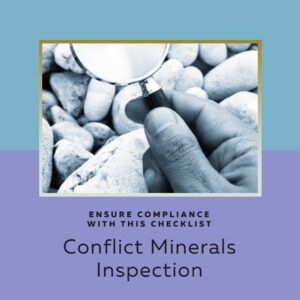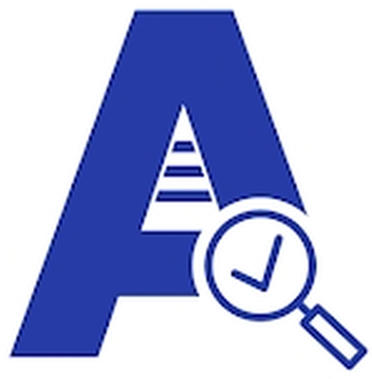Conflict minerals inspection with eAuditor
Conflict minerals inspection involves assessing and monitoring the supply chain to ensure that minerals sourced from conflict-affected regions are not being used in the production of various consumer goods.
Utilizing mobile eAuditor can streamline the inspection process and enhance traceability and compliance. Here’s an explanation of how mobile eAuditor can be used for conflict minerals inspection:

Customizable Inspection Checklist:
The mobile eAuditor allows inspectors to create a customizable inspection checklist specific to the Supplier Assessment .
The checklist typically includes items such as location, certifications, and due diligence, mineral types, country of origin, smelter or mine names, and any other requirements.
Supplier Assessment and Verification:
The mobile eAuditor can be used to assess and verify suppliers in the supply chain.
Users can input supplier information, including their location, certifications, and due diligence measures they have implemented.
The eAuditor may integrate with databases to track their compliance history.


Documentation and Data Collection:
During the inspection, the mobile eAuditor allows users to collect and input data related to conflict minerals.
Users can record information such as mineral types, country of origin, smelter or mine names, and other relevant details.
The eAuditor may include fields for attaching supporting documents, such as certifications, traceability records, or third-party audit reports.


Real-Time Data Verification:
The eAuditor may provide instant notifications or warnings if any red flags or non-compliant information is detected.
Traceability and Chain of Custody:
The mobile eAuditor facilitates the tracking of conflict minerals throughout the supply chain.
Users can input and update information regarding the movement of minerals from mines to refineries, smelters, and ultimately to manufacturers.
The eAuditor may include features such as QR code scanning or RFID tracking to enhance traceability and maintain a robust chain of custody.
Compliance Reporting:
Once the inspection is completed, the mobile eAuditor generates comprehensive compliance reports.
The reports include details of the inspection findings, supplier information, data validation results, and any attached documents.
The reports can be saved, shared electronically, and stored for audit purposes or regulatory compliance.
Auditing and Monitoring:
The mobile eAuditor can assist in conducting regular audits and ongoing monitoring of the supply chain.
Users can schedule and perform follow-up inspections, track supplier performance, and identify areas for improvement.
The eAuditor may provide reminders for upcoming audits, certification renewals, or regulatory updates.
Using mobile eAuditor for conflict minerals inspection improves the efficiency, accuracy, and transparency of the process. It enables real-time data verification, enhances traceability, and promotes responsible sourcing practices. Additionally, the eAuditor can help organizations demonstrate compliance with regulatory requirements, industry standards, and responsible sourcing initiatives. However, it’s important to ensure that the mobile eAuditor is regularly updated to align with evolving regulations and best practices in conflict minerals management. Organizations should also establish clear policies and procedures for conflict minerals inspection and communicate them effectively across the supply chain.
